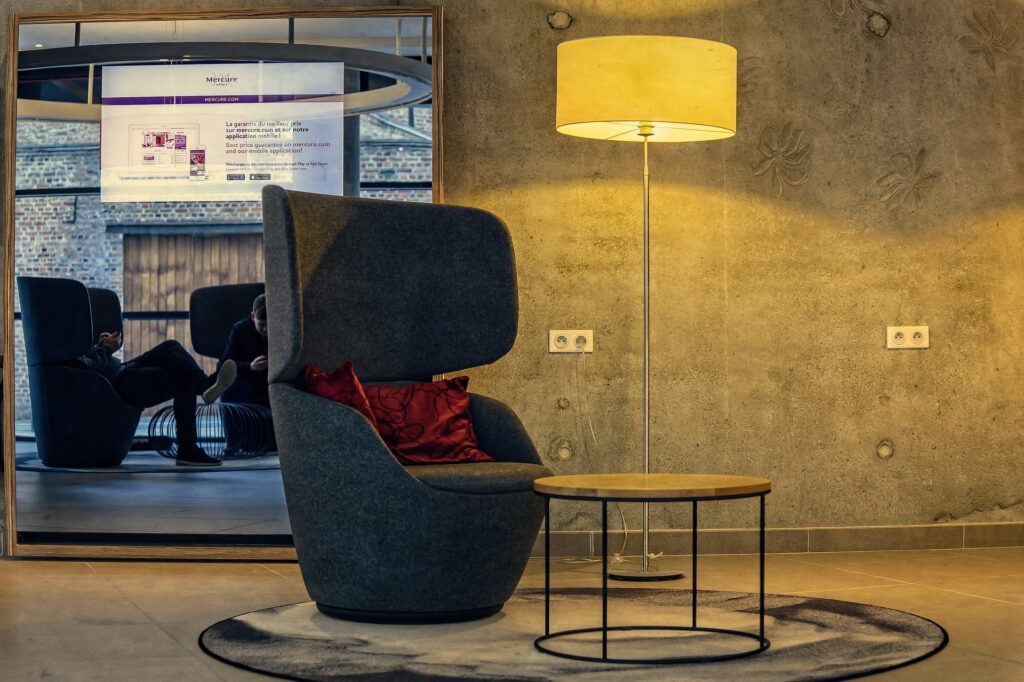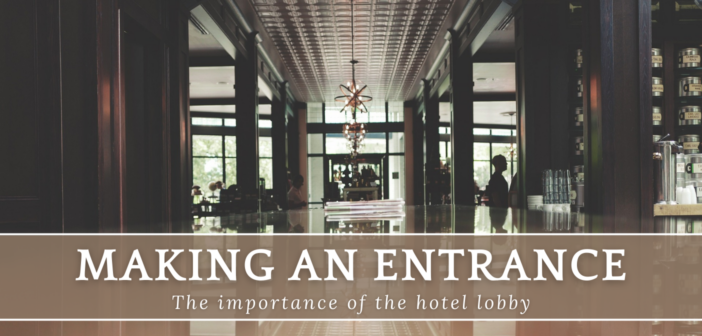The importance of the hotel lobby
by AKO ARDALAN
Any seasoned traveler is aware of the stereotypes surrounding the hotel lobby. When picturing hotel entrances, often we conjure up one of two images – a cramped, soulless room with a big concierge desk, or a hectic antechamber where guests check-in and exit as quickly as possible.
But, the significance of hotel lobbies is evolving as the hospitality sector returns its focus, post-COVID, to encouraging atmospheric, communal, and social spaces.
Today, there’s no room for lackluster first impressions. Guests expect that extra wow factor from the moment they step foot on the property. Subtle, yet effective, design tweaks have the power to transform a drab foyer into the bustling hub of the hotel. A lobby must be a multi-functional space, but showcasing a unique design, technology integration and local influences is arguably just as important.
Your lobby can function as a social center, appropriate for work or play. To accomplish this, it’s paramount to introduce social zoning. This is the art of creating dedicated areas that flow seamlessly together, successfully performing multiple roles, and catering to the needs of every visitor.
Here are four key ways hotels can create inviting and multifunctional entrances that ooze magnificence.
1. SOCIALIZING SPOT
The lobby bar has made a grand return in recent years, forming the ultimate multi-purpose space, which can easily transition from a breakfast buffet in the morning to a lively cocktail bar in the evening. Every hotel bar should have its own distinctive feel, whether it’s a bright and buzzy ambience, or a quiet romantic spot.
 Comfortable seating and impeccable design are crucial when curating an atmosphere that encourages guests to socialize. Incorporating different levels of seating, such as barstools or high-back sofas, can effectively separate areas and provide privacy for different groups, even in an open space. Establishing a space with comfortable and welcoming seating can create a laid-back and relaxed setting for guests to unwind. The right combination of seating options and design elements will create a welcoming and inviting atmosphere that encourages guests to gather, socialize, and enjoy their time in the lobby bar.
Comfortable seating and impeccable design are crucial when curating an atmosphere that encourages guests to socialize. Incorporating different levels of seating, such as barstools or high-back sofas, can effectively separate areas and provide privacy for different groups, even in an open space. Establishing a space with comfortable and welcoming seating can create a laid-back and relaxed setting for guests to unwind. The right combination of seating options and design elements will create a welcoming and inviting atmosphere that encourages guests to gather, socialize, and enjoy their time in the lobby bar.
Consider enhancing the guest experience by offering live music, DJs, or other forms of entertainment to create a dynamic atmosphere. Remember, a foyer doesn’t have to be limited to guests. An exciting new bar can also attract people from outside the hotel, serving as a destination in itself.
2. CO-WORKING SPACE
 Thanks to COVID-19, many workers are remote, allowing them free reign to set up shop anywhere they choose. Introducing dedicated working spaces in the lobby is a valuable way to create a destination place as opposed to a transitional area. Providing technology services such as Wi-Fi and charging centers helps guests stay connected and productive while on the go. Think about creating a workspace that is professional yet creative. Hotel lobbies designed with unique decor, artwork, and ambience can spark inspiration for remote workers.
Thanks to COVID-19, many workers are remote, allowing them free reign to set up shop anywhere they choose. Introducing dedicated working spaces in the lobby is a valuable way to create a destination place as opposed to a transitional area. Providing technology services such as Wi-Fi and charging centers helps guests stay connected and productive while on the go. Think about creating a workspace that is professional yet creative. Hotel lobbies designed with unique decor, artwork, and ambience can spark inspiration for remote workers.
Consider using modular seating arrangements that can be reconfigured to accommodate different group sizes and work styles. This can include modular sofas, chairs, and ottomans that can easily be rearranged to create different seating set ups, promoting flexibility and adaptability in the co-working space.
3. BECOME IMMERSED IN LOCAL CULTURE
 Whether you’re designing a large resort or smaller boutique hotel, travelers today seek immersive experiences that promote escapism. By integrating local elements such as captivating artwork and cultural references in the lobby design, hoteliers create a sense of place, helping guests connect with the destination on a deeper level. For example, using light wood and marble may portray a more modern and contemporary image, while darker teak wood and richer color schemes may exude a more traditional or classic vibe. Aligning the design aesthetics with the local culture can create a cohesive and visually appealing environment for guests.
Whether you’re designing a large resort or smaller boutique hotel, travelers today seek immersive experiences that promote escapism. By integrating local elements such as captivating artwork and cultural references in the lobby design, hoteliers create a sense of place, helping guests connect with the destination on a deeper level. For example, using light wood and marble may portray a more modern and contemporary image, while darker teak wood and richer color schemes may exude a more traditional or classic vibe. Aligning the design aesthetics with the local culture can create a cohesive and visually appealing environment for guests.
4. SUSTAINABILITY IS KEY
Sustainability is an increasingly important consideration in hotel design as global environmental awareness grows and consumer expectations shift toward more eco-friendly practices.
Embracing sustainability goes hand in hand with the current trend of blurring indoor/outdoor spaces. Durable, well-made products are fundamental to withstand the outside elements. Investing in quality rattan rather than cheap woven plastic can make a significant difference to both the aesthetic and environmental impact. By prioritizing sustainable materials and craftsmanship, hotels can create a foyer that is visually appealing and simultaneously aligned with eco-friendly values.
Overall, guests are craving new stand-out experiences when booking hotels. Creating design-led lobby spaces can be a key differentiator in a crowded market.
 Ako Ardalan is a CEO with a background in finance and engineering. He began his career as an investment banker at Goldman Sachs in Sydney before founding Unalome Interior. Ako’s leadership has enabled the company to achieve remarkable growth and success, expanding its supply chain in Indonesia and navigating import regulations to reach customers worldwide. Additionally, Ako has prioritized labor fairness and improved working conditions for employees by repurposing and reinvigorating factories. Ako’s passion for golf and surfing is evident in his approach to both work and play. He is a skilled leader with exceptional strategic thinking and an entrepreneurial mindset.
Ako Ardalan is a CEO with a background in finance and engineering. He began his career as an investment banker at Goldman Sachs in Sydney before founding Unalome Interior. Ako’s leadership has enabled the company to achieve remarkable growth and success, expanding its supply chain in Indonesia and navigating import regulations to reach customers worldwide. Additionally, Ako has prioritized labor fairness and improved working conditions for employees by repurposing and reinvigorating factories. Ako’s passion for golf and surfing is evident in his approach to both work and play. He is a skilled leader with exceptional strategic thinking and an entrepreneurial mindset.




